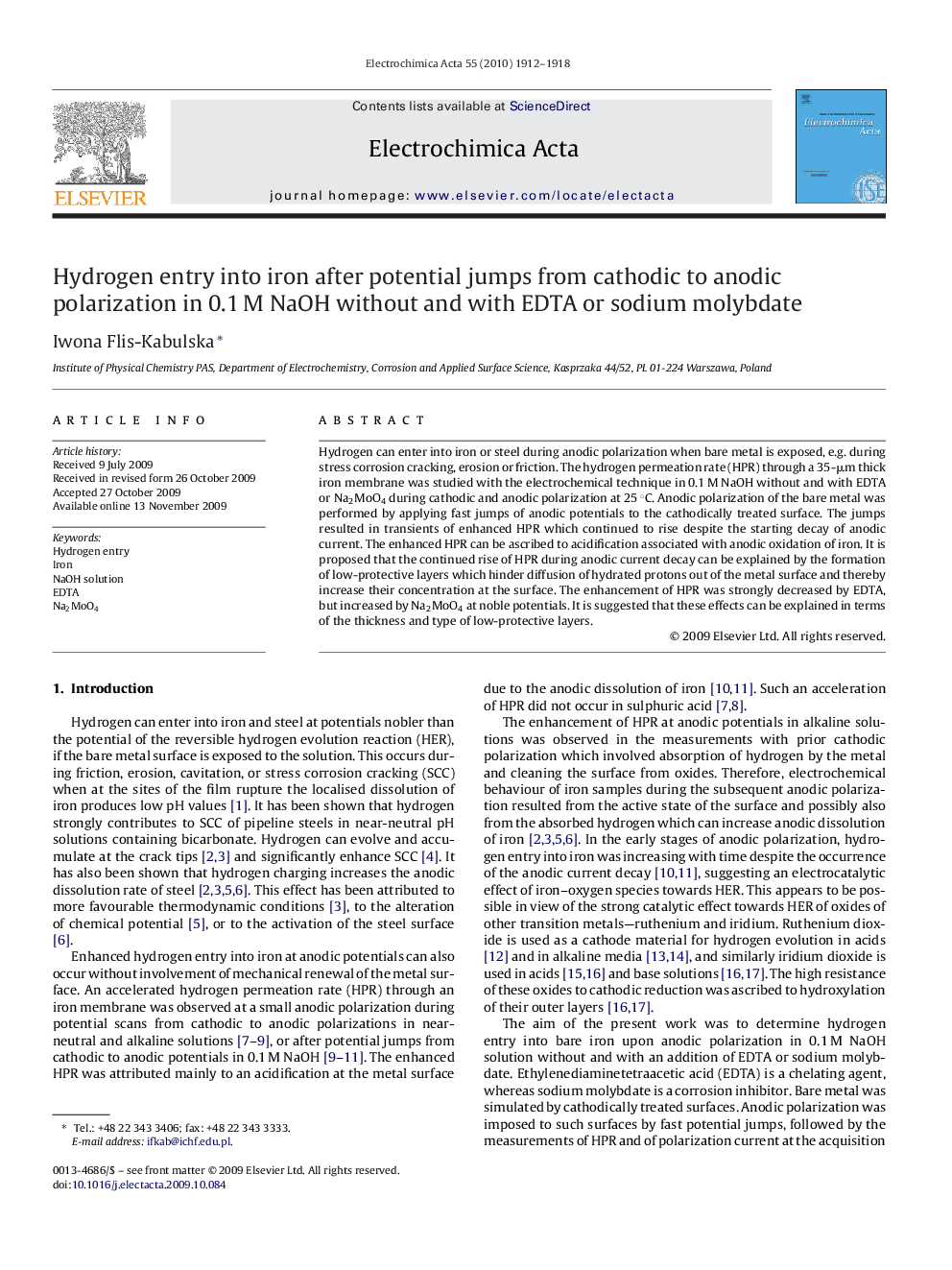| Article ID | Journal | Published Year | Pages | File Type |
|---|---|---|---|---|
| 191755 | Electrochimica Acta | 2010 | 7 Pages |
Hydrogen can enter into iron or steel during anodic polarization when bare metal is exposed, e.g. during stress corrosion cracking, erosion or friction. The hydrogen permeation rate (HPR) through a 35-μm thick iron membrane was studied with the electrochemical technique in 0.1 M NaOH without and with EDTA or Na2MoO4 during cathodic and anodic polarization at 25 °C. Anodic polarization of the bare metal was performed by applying fast jumps of anodic potentials to the cathodically treated surface. The jumps resulted in transients of enhanced HPR which continued to rise despite the starting decay of anodic current. The enhanced HPR can be ascribed to acidification associated with anodic oxidation of iron. It is proposed that the continued rise of HPR during anodic current decay can be explained by the formation of low-protective layers which hinder diffusion of hydrated protons out of the metal surface and thereby increase their concentration at the surface. The enhancement of HPR was strongly decreased by EDTA, but increased by Na2MoO4 at noble potentials. It is suggested that these effects can be explained in terms of the thickness and type of low-protective layers.
